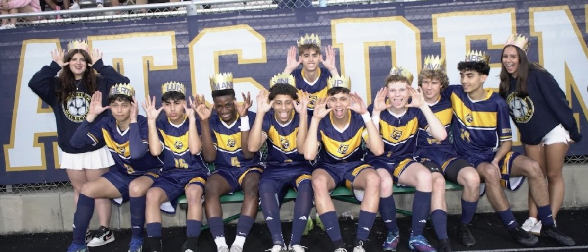Color Guard Should be a Sport
Practicing outside under the bright July sun for more than ten hours in five days, learning all of your drill, dance work, making sure every step is on time, all while performing. This is what band camp is for every color guard member, doesn’t sound like any band camp stereotype now does it. No matter if your high school or in college band camp will be just as hard, with no excuses. Across the nation, color guard starts to prepare for the season several months before band camp. Even though all of these tasks seem hard to complete without experience, people still believe color guard is not a sport.
According to the Dictionary, a sport is an “an activity involving physical exertion and skill in which an individual or team competes against another or others for entertainment,” By looking at this definition, there is absolutely no reason to believe that color guard isn’t a sport Starting exertion and skill. A lot of people tend to believe that color guard is so “easy” because all your doing is “twirling” and tossing a flag or weapon. It’s much easier said than done. In reality, guard members are doing it with a heavy flag for several minutes or hours while running around the field in sync with every single member. Following every single count can sometimes be very difficult. When color guard members are at practice, they are required to practice their technique for hours by doing drop spins, pull hits, dancing and several kinds of intricate tosses Practicing these techniques requires timing, skill, strength, stamina, and cooperation.
If a sport requires team or individual competes, the color guard is a sport. Color guards are known to perform during halftime shows, but for competitions as well. Color guard receives individual scores in every competition based on one technique, equipment, and dance. The color guard is also very much a team because every single member needs to work together to better the performance and placement in competitions. .Not only does the color guard need to work together for competitions but even at practices. Each member of the guard is required to catch up on any missed work, which means other members need to teach them anything that they’ve missed.
Finally, to be a sport, it has to be for the purpose of entertaining people. That is precisely what the color guard does. Color guard provides all of the visual effects in a marching band show. The color guard brings out the props and colors to bring the show to life. The color guard entertains the audiences at competitions and especially during any halftime show. To make the audience engage and be entertained with a show every single member is required to show emotion and perform a story, if not then the show is just lifeless.
An activity that can relate to this and struggled to become a sport was cheerleading. People stated that cheerleading should not be considered a sport because sports do not need to be “aesthetically pleasing.” Because of this statement, it makes sense that color guard would not be a sport. If you strongly believe in this standard, however, then gymnastics could not be considered a sport, because the are judges on the same things. Aesthetics should not be a standard because then synchronized swimming and even figure skating shouldn’t be a sport. If color guard puts the same amount of effort and has the same amount of standards then why isn’t color guard just considered a sport at this point?
Color guard meets every standard to be a sport, but people will always come up with excuses about how it should not be. Even though you can’t convince someone who hasn’t experienced this activity, it’s always worth a try. The hard work and dedication that comes with color guard are always worth talking about when it comes to convincing someone that it should be a sport.



